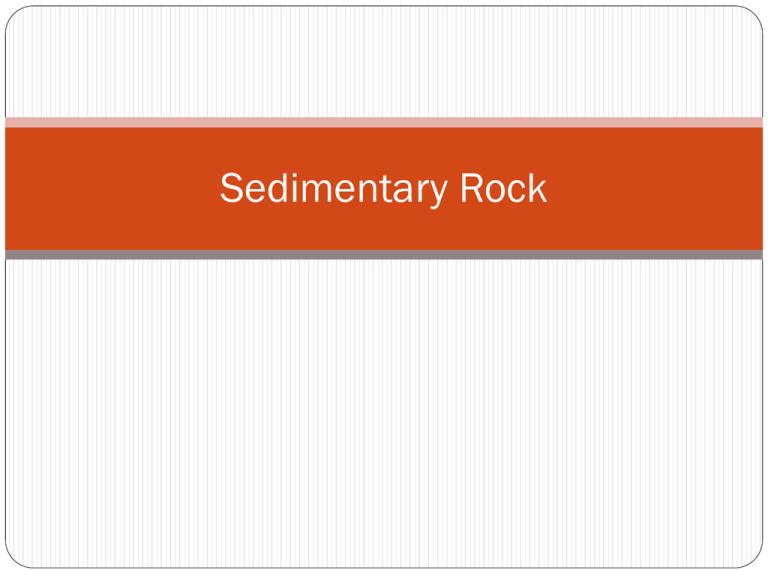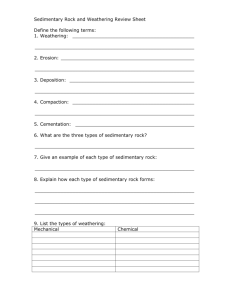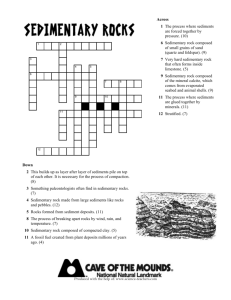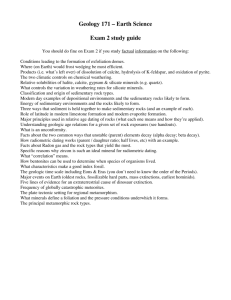Sedimentary Rock
advertisement

Sedimentary Rock Sedimentary Rock Sedimentary rock is created when existing rock breaks down into sediments, and then the sediments are recombined by compaction and cementation Sedimentary Rock Sediments are created by three forces: Weathering Erosion Deposition Weathering Weathering is any process that breaks down rock. There are two types of weathering Chemical weathering Mechanical weathering Chemical Weathering Chemical Weathering is the transformation of rock into one or more new compounds Water is the most important agent of chemical weathering Mechanical Weathering Mechanical weathering occurs when physical forces break rock into smaller and smaller pieces without changing its composition Mechanical Weathering Three forces account for the majority of mechanical weathering: Frost wedging Unloading Biological Activity Frost Wedging When liquids freeze they expand, causing rock to break apart. Unloading Unloading occurs when pressure is removed from a rock body causing it to expand and break Biological Activity The activities of plants and animals can cause rock to break apart For example tree roots can break through rock layers, or borrowing animals creating holes in rock. Erosion Erosion is the removal of rock and its movement by water, wind, ice, or gravity. Deposition When water, wind, ice or gravity loses energy the sediments are released and deposited in a new area. Sediments are deposited according to size, with larger sediments being released first Sedimentary Rock Compaction and cementation are the two processes that change sediment into sedimentary rock. Compaction Compaction is a process that squeezes, or compacts sediments Cementation Cementation takes place when dissolved minerals are deposited in tiny spaces among the sediments. These minerals hold the sedimentary rocks together Classification of Sedimentary Rock Sedimentary rocks like igneous rock can be classified into two groups based on how the form: Clastic Sedimentary Rock Chemical Sedimentary Rock Clastic Sedimentary Rock Clastic Sedimentary Rocks are created when weathered bits of rocks or minerals are cemented together Chemical and Biochemical Sedimentary Rocks Chemical Sedimentary rocks are created when dissolved minerals precipitate from water solutions Biochemical Sedimentary rocks are created when living or once living materials are cemented together Features of Sedimentary Rock Sedimentary rock can have unique features that can help us interpret the history of the Earth. Some Features include: Ripples Mud Cracks Fossils






